Dolby Audio Room Design Tool
Dolby Atmos: what is it? How can you get it?
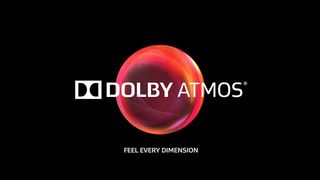
Making its way from film sets and post-production suites all the way into living rooms, Dolby's Atmos surround sound technology has quickly become one of the most important and impressive technologies in home cinema.
Since the very first Dolby Atmos installation in the Dolby Theater in Los Angeles (for the June 2012 premiere of the Disney/Pixar animated filmBrave), Dolby Atmos has transitioned from the "future of home cinema audio" to very much the here and now.
That's not only thanks to the immersive surround sound technology gaining traction in Hollywood but also its support throughout the chain – it runs from content creation and distribution right the way through to hardware and device compatibility. Video streaming services, TVs, AV receivers – you name it, there's a good chance Dolby Atmos is part of the package.
Dolby has also developed Dolby Atmos Music tracks, which add a whole new dimension to music listening, and London's Dean St. Studios has recently unveiled a new state-of-the-art PMC loudspeaker system for Dolby Atmos Music projects, the first at an independent recording facility in the UK.
It's the combination of Dolby Atmos and Dolby Vision to create the Dolby Cinema experience that remains the big draw for most, though, having picked up many an award, including our Innovation of the Year Award in 2019.
Atmos might not be a part of every cinema experience, but it is available in an increasing number of cinemas worldwide – there are over 6,100 locations as of 2021. Even better, you can now enjoy this pinpoint-precise surround sound experience at home, whether that's through an Atmos-enabled AV receiver and speaker package, an Atmos soundbar, or even an Atmos-capable TV.
But what exactly is Dolby Atmos? And what kit do you need to get involved? Allow us to explain...
- Dolby Atmos vs DTS:X: what's the difference?
What is Dolby Atmos?
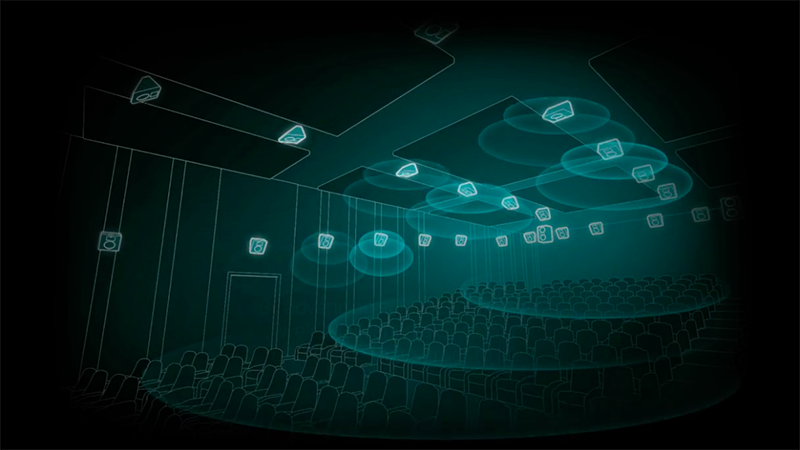
Atmos is, in Dolby's own words, "the most significant development in cinema audio since surround-sound." And we'd have to agree, really (whilst also recognising that rival DTS:X – a similar object-based surround technology – is also making headway).
Atmos is a surround-sound technology that was originally developed in 2012. It expands upon the existing 5.1 and 7.1 surround-sound set-ups with surround channels coming from overhead.
Speakers have been placed along walls (at all heights) and even behind the screen itself, but the crucial point about Atmos is that you can place speakers in the ceiling, enveloping the audience in a dome of sound.
Up to 400 speakers can be used in the top Dolby Atmos cinemas, but in a domestic environment, it's unlikely you'll have the room (or the desire) to house such a system.
Instead, there are some simpler options: the addition of two or four ceiling speakers in your system; installing add-on speaker modules on top of your existing main floorstanding or bookshelf front left/right speakers (one set, for a .2 configuration) or your left/right front and rear/surround speakers (two sets, for a .4 configuration); or the purchase of a purpose-built Atmos speaker system.
When a Dolby Atmos system is installed, the room receives a complete calibration, allowing sound mixers to precisely 'place' sounds and voices at exact points in the soundfield rather than just to specific channels. Each speaker in an Atmos system has its own discrete feed, enabling new front-, surround- and ceiling-mounted height channels.
- Inside the UK's first Dolby Cinema: 400 speakers, Dolby Atmos and a Compton organ
Dolby Atmos in the home
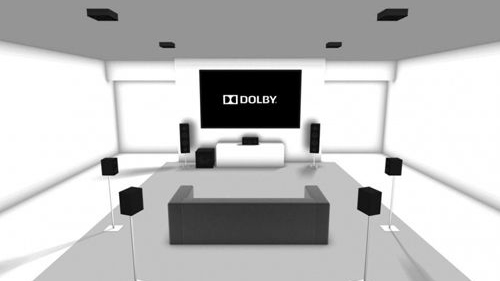
Given that a cinema-style installation isn't a practical solution for most people, AV manufacturers have stepped in to make it realistic in the domestic situation – and even, in some cases, affordable.
Now, you have options. The golden path starts with a compatible AV receiver with the ability to decode an Atmos soundtrack. Most receivers that have come to market in the past couple of years support the format – even at the budget end – including all of the most recent What Hi-Fi? Award-winners.
The best news: domestic arguments aren't necessary as you don't have to make holes in your ceiling for installing in-ceiling speakers. Atmos speaker packages often incorporate upward-firing drivers into their front speakers so that sound is reflected off the ceiling and towards your listening position to create a pseudo-overhead effect.
- How to set up your home cinema speaker system

Pioneer was one of the first out of the blocks with a complete Atmos speaker package, the S-73A, back in 2014 – and it's since been joined by the likes of Klipsch, Focal, Jamo, Elac and others.
One of the best speaker packages is the Elac Debut 2.0 5.1 Home Theatre System, which has Dolby Atmos topper speakers available, while the affordable Jamo S 807 HCS is a fun, endearing and practical 7.1 Dolby Atmos speaker package.
You can also buy a wireless Atmos speaker system, thanks to Damson's S-Series (although this £650/$649 system is not quite in the same league as the packages mentioned above) and more recently Lithe Audio launched its WiSA-certified wireless Dolby Atmos ceiling speakers, though we're yet to hear them for ourselves.
Requiring much less fuss is the ever-expanding range of Atmos soundbars, such as the Sonos Arc (£799/$799), which can offer a convincing Atmos presentation from a single, simple unit.
- Best AV and home cinema deals
Atmos can also work with existing home cinema systems. Dolby Atmos-enabled speaker modules are available which, when placed on top of your speakers, allow your system to deliver Dolby Atmos sound from a compatible AV receiver.
KEF is one such brand, with its Q50a and R8a modules. The modules aren't limited to being used with KEF speakers – they can be placed on top of any speakers you already own. As mentioned above, this strategy has been adopted by Elac, too, and AV Industry brands Elipson, Tangent and Eltax have all announced budget Atmos modules.
Dedicated Atmos speaker packages are still in relatively short supply though, which brings us to the option briefly covered above: Dolby Atmos soundbars. They tend to use upward-firing drivers to disperse sound overhead. So far, the Sony HT-ST5000 has seriously impressed, as have the aforementioned Sonos Arc and Sennheiser's stunning, but pricey, Ambeo Soundbar.
Special mentions should also go to the small-but-mighty Sony HT-ZF9, powerful Samsung HW-N950 and punchy LG SK10Y. And if you want Atmos on a budget, look out for the Sony HT-G700.
LG has also announced a slew of new soundbars featuring Dolby Atmos. The flagship the LG SP11RA totes a 7.1.4 speaker configuration, support for hi-res audio, Dolby Atmos and DTS:X, while the petite QP5 Éclair will deliver 3.1.2 channels in a single unit that's just 30cm long.
- Sony HT-G700 soundbar delivers Dolby Atmos on a budget
- Should you buy an LG soundbar
As for Blu-ray players, Dolby says you don't need a brand new player to support Atmos, as long as your player fully conforms to the latest specifications and can output a bitstream audio signal for your AV receiver to decode.
Now, increasing numbers of TVs (including LG's 2017-2021 OLED models) support Atmos. It's not quite the same as having a room full of speakers, and most TV's can't fire audio overhead, but LG claims the general quality of the audio is still an improvement over a standard stereo signal.
In 2019, Panasonic introduced the five-star GZ2000 4K OLED TV, which has its own upward-firing Dolby Atmos speakers built into the set's rear. It was one of the most impressive OLED TVs we've tested – and the 2021 version, the JZ2000, will add a pair of side-firing speakers to its front and upward-firing drivers.
In 2020, Hisense's flagship U8QF boasted Atmos and front-firing JBL speakers while all of its 2021 models now feature Dolby Atmos, as do ranges from the likes of TCL and Sony.
Meanwhile, Danish luxury hi-fi brand Bang and Olufsen's 48-inch OLED TV, the Beovision Contour, has a built-in soundbar using tech derived from the Bang & Olufsen Stage with Atmos on board for adding some height to the audio proceedings.
- Sonos Arc vs Beam vs Playbar vs Playbase: which is best?
Dolby Atmos Height Virtualization
No Atmos speaker set-up or soundbar, no Atmos experience? Not quite. In realising that not everyone can afford dedicated Atmos speakers/soundbars – and no doubt in an effort to expand the reach of the technology – Dolby has created processing designed to create a 'virtual' Atmos experience from regular, non-Atmos-supporting hardware.
Dolby Atmos Height Virtualization, for example, aims to simulate the overhead sound experience of Atmos through speakers at listener-level, i.e. not overhead. Like DTS:X's sibling DTS Virtual:X, it's designed to create an immersive, 360-degree soundfield from a 5.1, 7.1 or even stereo speaker configuration.
The technology works by applying height cue filters to overhead audio components in a mix before it is dished out to speakers in front of the listener. Dolby says these filters "simulate the natural spectral cues imparted by the human ear to sounds arriving from overhead… special care has been taken to equalise the associated filters so that the timbre of the audio remains natural anywhere in the listening environment".
A number of output configurations are supported. For example, using two to seven listener-level channels to create the sensation of either two or four overhead speakers.
Dolby Atmos Height Virtualization is available in select budget AVRs, such as the excellent Denon AVR-X2700H, the Denon AVC-X3700H and the Pioneer VSX-534 slimline amp.
- Best speaker packages 2020: budget to premium, 5.1 and Dolby Atmos
Dolby Atmos content

Loads of films have been produced in Dolby Atmos since 2012 – the list has expanded six-hundred-fold (and the rest). Yes, really.
And many have made their way to Ultra HD 4K Blu-ray, too. With all major Hollywood studios now supporting the disc (Disney was the last), the title count is now well into three figures, with the likes of Blade Runner 2049, Roma, Mad Max Fury Road, Alita: Battle Angel, Avengers: Endgame, Us and Tenet among the best releases of recent years.
There are currently over 40 cinemas in the UK and Ireland that are fitted with Dolby Atmos technology (including the Empire Leicester Square in London) and over 6100 screens worldwide. You can see a full list of Dolby Atmos cinemas on the Dolby website.
Dolby and Odeon have also opened the first Dolby Cinemas in the UK. The newly named Odeon Luxe Leicester Square was the first. It includes an 800-seat auditorium, which features no fewer than 400 Dolby Atmos speakers and 'spectacular Dolby Vision technology'. Pricing starts at around £10 per ticket, rising to £30 for a recliner.
The second Dolby Cinema to open in the UK was the Odeon Leeds Thorpe Park, which has since been joined by the Odeon Luxe Birmingham Broadway Plaza and others.
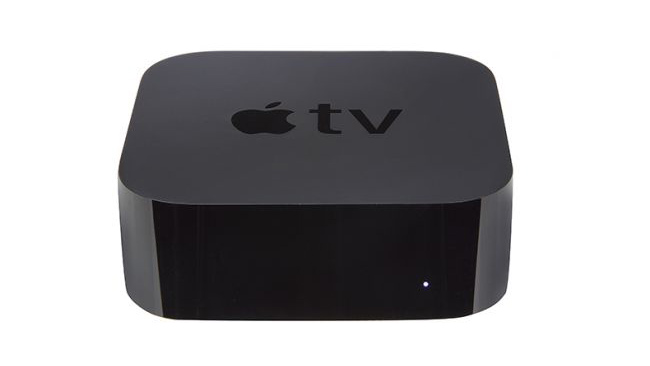
Aside from the disc, Dolby Atmos titles can be found on most of the major streaming services.
Atmos through the Netflix app is now supported by lots of devices, including many LG TVs, Sony Bravia Android TVs, Apple TV 4K and Microsoft's Xbox consoles, including the new Series X and Series S. Atmos titles include Formula 1: Drive to Survive, The Dig and Zack Snyder's Army of the Dead.
Amazon Prime Video features far fewer Atmos titles, but device support is again pretty broad, with LG and Sony TVs once again offering native playback, as well as Amazon's own Fire TV devices (our current favourite of which is the Fire TV Stick 4K), all Xbox Series and One consoles, the Apple TV 4K and Chromecast with Google TV. If you're looking to try it out, check out the Jack Ryan TV series.
A wider selection of Dolby Atmos content is also now available to owners of a Sky Q box and relevant subscription package via Sky Cinema and the Sky Store. And Rakuten is another film rental service providing Atmos content – albeit only to certain LG 4K TVs.
Most titles available through Apple TV+, including most Apple originals, support Dolby Atmos. And the Apple TV store perhaps offers the largest collection of Atmos titles to rent or buy anywhere.
Provided you have the necessary AV gear, Disney Plus streaming service serves up plenty of films, including all of the Star Wars feature films, in Atmos, though full support has been inconsistent across operating systems, with Android TVs generally missing out.
Away from films, live sports (mostly football) broadcasts are available to subscribers of BT's top-tier Total Entertainment package or Sky Q, and a number of PC and Xbox titles including Gears 5, Forza Horizon 4 Battlefield 1 and Call of Duty: Black Ops – Cold War support Atmos for gaming.
- 11 of the best Disney Plus shows and movies to watch right now
Dolby Atmos on mobile
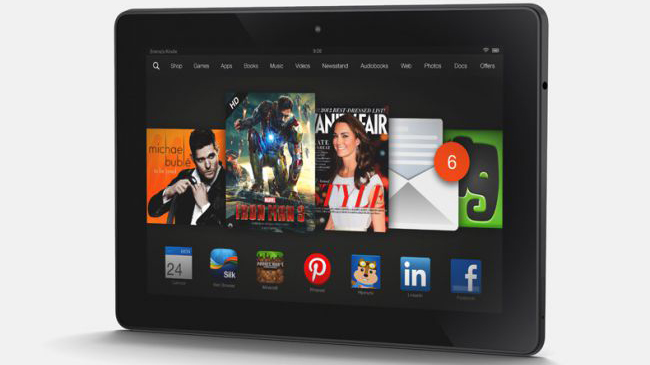
Dolby Atmos works on tablets such as the Amazon Kindle Fire HDX 8.9 via connected headphones, and on the Amazon Fire HD 10 , though this obviously won't be on the same level of immersiveness as a soundbar or surround sound system.
Atmos here works through 'binaural headphone rendering' and 'object-based audio'. Binaural headphone rendering creates surround sound through headphones via heat-related transfer functions (HRTFs). To explain how this works, Dolby gives an example of a car honking its horn: if it honks to your right, your right ear gets the full blast, while the left ear gets a less intense sound because the sound has to travel around your head. The brain recognises the differences, telling you to look to your right to see if the car is near you.
Dolby has reversed this process to create virtual surround sound from the single speakers in headphones, producing the effect that sound is coming from all around you.
- Binaural audio: what is it? How can you get it?
'Object-based audio' is the foundation of Dolby Atmos. Each sound in a scene has information explaining where it should be placed in the speaker configuration, and Dolby claims to have married these two technologies together to create a virtual, enveloping surround-sound experience on a mobile platform.
As for compatible smartphones, the OnePlus 8T and OnePlus 8 Pro, Samsung Galaxy S21, S20, S10+, S10 and Note 9 come with Dolby Atmos processing for a wider sound experience, with the likes of the Huawei P20, P20 Pro and P30, with the Sony Xperia 5 II, OnePlus 7 Pro and 8 Pro also following suit. Regarding iOS devices, the iPhone 11, 11 Pro and 11 Pro Max all support Dolby Atmos, as does the latest iPhone 12 lineup.
We didn't find it all that useful in the Samsung Galaxy S9 Plus, mind you. While it produces a "slightly wider effect", it "slightly blurs and compresses the sound compared to regular playback. We prefer to keep it off most of the time".
And you can now get Dolby Atmos in your cans too: JVC XP-EXT1 headphones and Microsoft's Xbox Wireless Headset both boast Dolby Atmos without all the speakers, while Apple Musics new Spatial Audio with Dolby Atmos feature will work withany headphones.
- Best smartphones 2020: best phones for movies and music
Dolby Atmos in music
It's not only limited to movie soundtracks, you know. Dolby Atmos also increasingly has music on its mind. The format may have been designed for surround sound in films, but it is now getting into music.
Since the first Blu-ray Audio disc with Atmos arrived in late 2015, Dolby Atmos-mixed music has started streaming.
That's mainly down to Dolby's 2019-penned partnership with Universal Music Group to bring 'thousands of songs transformed in Dolby Atmos from a diverse list of artists across a wide range of genres, from hip-hop, pop, and rock through jazz and classical music.'
Dolby Atmos Music is essentially a way of remixing songs using Dolby Atmos technology, and an increasing number of tracks can be found on Tidal and Amazon Music HD, while Apple has just announced that from June it will be adding lossless, hi-res and Spatial Audio with Dolby Atmos tracks to the Apple Music service, at no extra cost. Tidal Connect also has one-touch casting of hi-res and Dolby Atmos music – it's like Spotify Connect, but it's capable of higher quality.
The first tranche of 50 releases included Kraftwerk's3D The Catalogue,Hans Zimmer's Live in Pragueand R.E.M.'sAutomatic For The People (25th Anniversary Edition). The first electronic album specifically written and produced for the format wasWolf by trance pioneer Matt Darey, but John Williams' Live in Vienna concert recently got the Dolby Atmos treatment, and a new AvidPlay tool lets artists self-distribute their music in Dolby Atmos to Amazon Music and Tidal – so Dolby and Avid are clearly encouraging indie artists to create Dolby Atmos Music, too.
Meanwhile, German record label Mindmap has also released a special immersive audio compilation mixed in Atmos (available on Tidal) by Fritz Hilpert, who was nominated for the "Best 3D Surround Sound Album" at the 2017 Grammys. The electro-soul compilation features renowned international electronic music artists, such as Berlin-based electro duo Booka Shade.
You can see a full list of these releases on Dolby's website.
- Dolby Atmos Music: everything you need to know
- Michael Stipe says R.E.M. in Atmos is "breath-taking" – and we agree
London's Ministry of Sound nightclub has even been kitted out with a 60-speaker, 22-channel Dolby Atmos system. DJs now have the tools to more literally raise the roof – they can make Atmos mixes and edit them in real-time so certain elements of a track move around the room.
Atmos may only be infiltrating the music industry one album at a time, but as our (albeit limited) experience of the matrimony is nothing but positive, we say the more the merrier...
- Behind the scenes with Dolby Atmos at Ministry of Sound
The future of Dolby Atmos
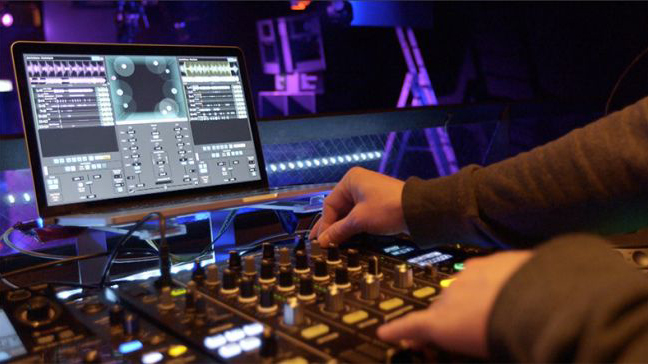
So where else do we want to see Atmos? Virtual reality appears to be a growing area of interest for Dolby. As supported above by the Atmos Height Virtualisation technology, the company is designing tools to deliver Atmos soundtracks in a virtual (and therefore more accessible) experience.
More music in Atmos appears to be a priority of, and potential area of growth for, Dolby too.
There's no doubt the all-encompassing, Atmos- and Vision-supporting Dolby Cinema venture will continue to spread. Dolby Atmos will even be making its in-car debut this year with the Lucid Air electric vehicle as part of a 21-speaker Surreal Sound system. We've seen a number of manufacturers announce plans to offer immersive in-car audio experiences over the last couple of years and we're keen to see if other car manufacturers sign up to support Dolby Atmos in their vehicles.
Perhaps the biggest and most immediate area for expansion is more affordable hardware, though. While AVRs – both budget and high-end – are almost all on board, we'd like a greater choice of affordable speaker solutions and soundbars please. The first wireless speaker to fully support Dolby Atmos Music was the Amazon Echo Studio, but hopefully this is just the first of many.
MORE:
- Dolby Laboratories, quietly making it sound better
- 11 of the best film scenes to test surround sound
- DTS:X - what is it? How can you get it?
Becky is Hi-Fi and Audio editor of What Hi-Fi?, and has been part of the team for almost eight years, with her current position preceded by roles as a staff writer and news editor. During that time she has been fortunate enough to travel the world to report on the biggest and most exciting brands in hi-fi and consumer tech (and has had the jetlag and hangovers to remember them by). In her spare time, Becky can often be found running, watching horror movies and hunting for gluten-free cake.
Dolby Audio Room Design Tool
Source: https://www.whathifi.com/advice/dolby-atmos-what-it-how-can-you-get-it
Posted by: franklinsart1949.blogspot.com

0 Response to "Dolby Audio Room Design Tool"
Post a Comment